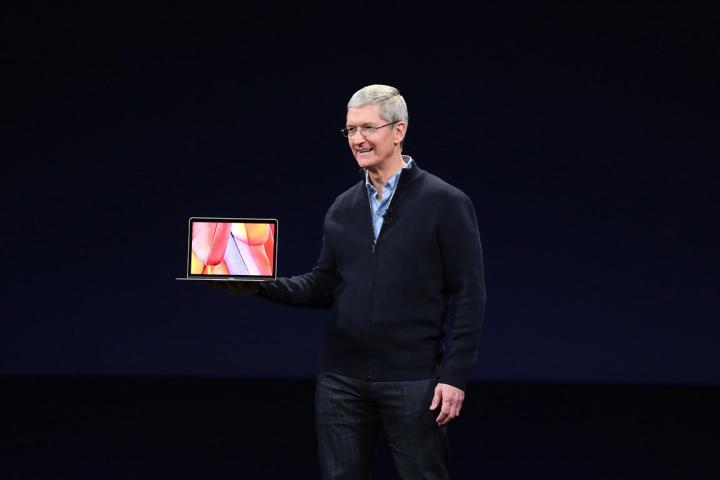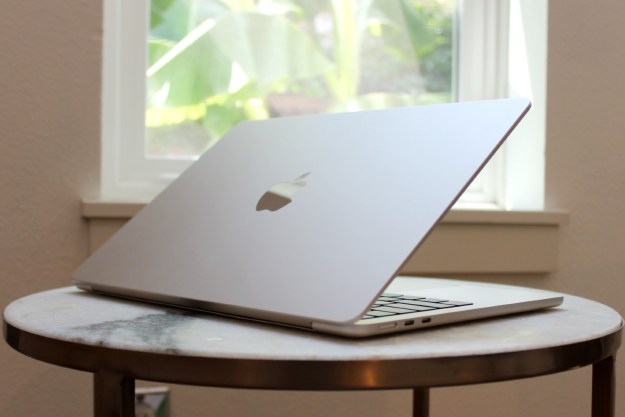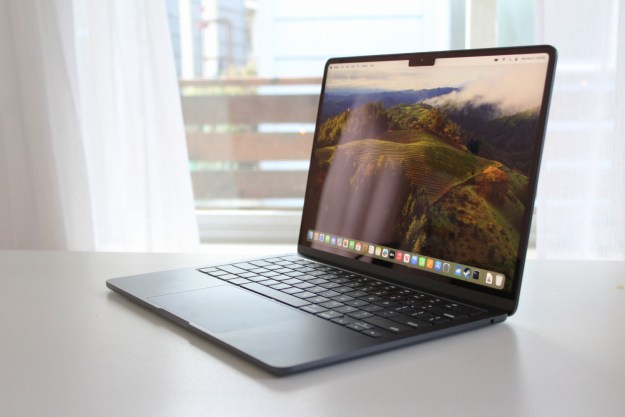
While musicians have long been keen to Apple’s line of laptops for their durability, performance, speed, user-friendly interface, exemplary graphics, and apps (i.e. Garage Band, Logic, etc.), the company’s newest laptop was not designed for recording a new hit single. It’s shiny, sleek, and has a long-lasting battery, but this new MacBook simply lacks the processing power and ports musicians need for music production.
The new laptop’s primary selling point is in its size and design. It’s super slim (measuring just 0.52 inches at its thickest point) and weighs just two pounds, partially because it lacks a fan. It also features Apple’s beautiful Retina display, something that the similarly modeled MacBook Air doesn’t.
Beauty comes at a price, though, and its downsides are difficult for creatives to swallow: compromising speed and lack of ports. It’s powered by the Intel Core M processor, a low-power processor whose capabilities are somewhere between the Intel Core processor of MacBook Pro and Air and the Intel Atom processor of Windows tablets. In layman’s terms, Garage Band just isn’t going to run as smoothly. (Do note that it has 8 GB of RAM, which will make for pretty decent multitasking.)
Apple’s always on the cutting edge, but one forward-looking feature, the MacBook’s new USB-C port, is too idealistic for everyday creative computing in 2015. The only port on this forthcoming MacBook (aside from a headphone jack), it’s job is to handle power, data transfer and display. Read: if you want to connect an instrument (or a microphone, an iPhone, an external hard drive, etc.) to your computer, you aren’t going to be able to charge your computer at the same time — unless you buy the $79 multiport adapter.
This multiport adapter, which converts the MacBook’s single USB-C port into three separate ports (a USB-C port, a standard USB 3.1 port, and a HDMI port), will give musicians and other creatives the ability to connect more than one peripheral at a time. But this means one more expense, and even this adapter allows for just two additional inputs (alongside the USB-C port, which will most likely be used for power). In comparison, the MacBook Air has two USB 3.0 ports and two Thunderbolt ports. USB-C does have amazing potential, including the potential to connect and charge all of your devices with one cord, but few devices currently have USB-C connectors as it is such a new technology.
The 2015 MacBook, with its slim, futuristic design, surely is a stepping stone to the future in laptop computing. But for someone who needs a high-performance machine for audio and video editing, it just doesn’t have the processing power. You’re probably better off waiting — as is usually the case with changing technology — until Apple makes a MacBook with better processing power and USB-C becomes the norm.
Editors' Recommendations
- The XPS 16 is fighting an uphill battle against the MacBook Pro
- A new wave of powerful laptops rises to challenge the MacBook Pro
- If you buy one MacBook Air alternative, make it this one
- The case for buying the M2 MacBook Air over the M3 model
- Why you should buy a MacBook Pro instead of a MacBook Air

